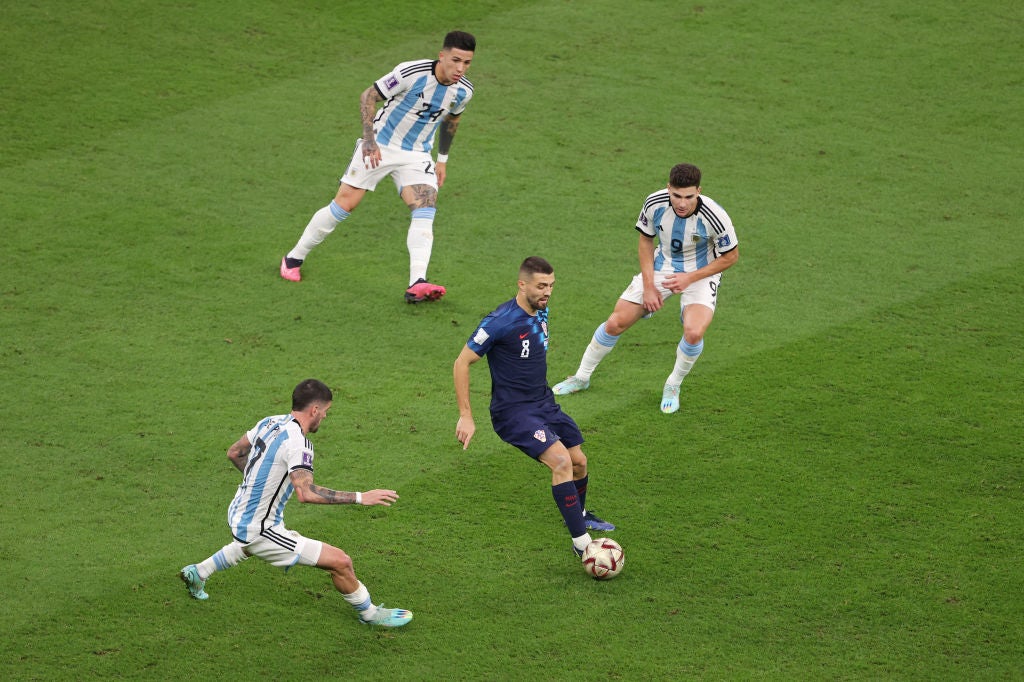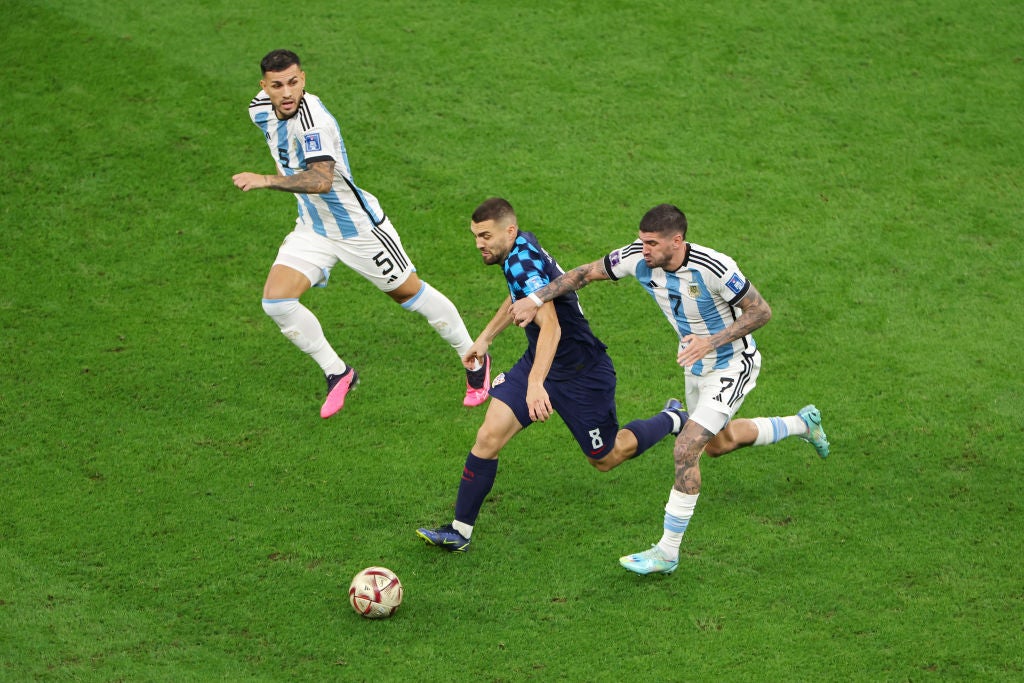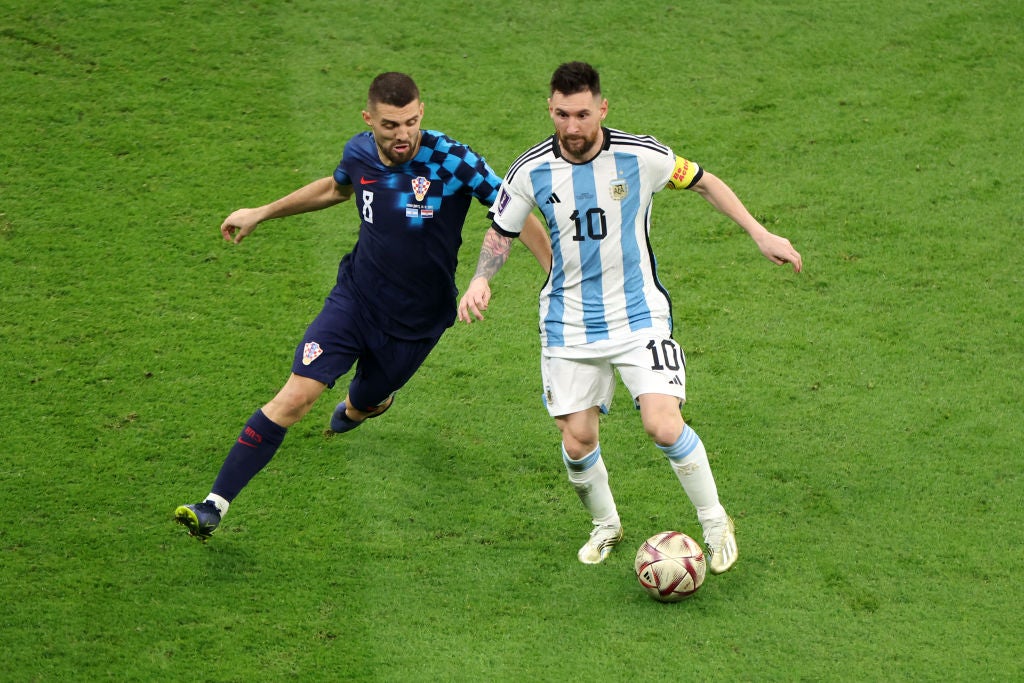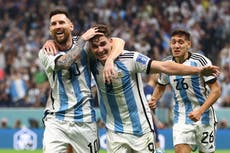How Argentina outmanoeuvred Croatia’s magic midfield to reach the World Cup final
Argentina 3-0 Croatia: A switch to 4-4-2 left the Albiceleste able to control the centre of the park even without the ball, before the attack had the cutting edge to destroy their European opponents

For the third time in as many knockout games, Lionel Scaloni shuffled his system, altered his defensive approach and ensured Argentina had the tools to win a game at the World Cup 2022.
Considering his relative inexperience as a decision-maker in coaching setups, the attacking talent available in the squad and the massive pressure on him to bring overdue success to the nation, Scaloni has shown admirable insight and earned all-important buy-in.
It’s not even necessarily tactical brilliance from the head coach, but rather an innate appreciation of which of his players can perform the roles he wants against each opponent - and, clearly, the ability on the training pitch to transmit that effectively.
From the 4-3-3 against Australia, to the 3-5-2 against the Dutch, here it was very much a four-man midfield picked in place to thwart, frustrate and eventually get beyond the dominant Croatia midfield. Argentina’s gameplan was never to stop the Modric-Brozovic-Kovacic axle from having the ball. Indeed, when the third and final goal went in, the Vatreni had enjoyed - contextually, completely the wrong word - 62 per cent possession.
Instead, Scaloni’s selections and gameplan were based on ensuring they could do absolutely nothing with it. In that regard, perfection was just about achieved.
In came Leandro Paredes, a starter when the World Cup began for Argentina but since removed, as he sat alongside the breakout star who effectively took his place - Enzo Fernandez. Either side of them were Alexis Mac Allister and Rodrigo De Paul; not wide, but wider; not fixed, but mobile parts of a system designed to prevent floods of dark blue shirts heading through towards the striped blue and white.
Of the quartet, only Paredes really held a single position when Argentina were in possession.
Mac Allister drifted from the left into a more advanced and often central role, the link between midfield and attack, with Enzo always happy to dovetail with him in turn. De Paul, in probably his best performance of the tournament, alternated between raiding the channel and shuttling central to ensure turnovers were not damaging, that there was always an immediate body in place if a certain No.10 did happen to lose possession.
And then, of course, you’ve got a Lionel Messi in the team.
If the patience and timing was right in when to commit numbers forward - and it often was - then the attack could be fairly confident of taking care of itself.
First, though, the platform had to be set defensively.
Here is where the four against three helped Argentina. Early on it became quickly apparent that the overall plan wasn’t particularly difficult in detail, but certainly so in terms of concentration and diligence required. Any time the Croatia middle three took possession, an immediate shuttle run was required by one of the Argentina four: make it a two-versus-one every time. Cut off the passing lane, force a backwards turn or sideways ball.

The proximity of the Croatian trio to each other meant those passes were over relatively short distances, enabling Fernandez and De Paul in particular to keep making the short-range cover sprints, moving along one at a time to ensure they doubled up, again and again. It wasn’t an outright aggressive press, nor even an attempt to directly challenge for the ball every single time, but rather to control the space in which the game was played.
Paredes was perhaps rudimentary in possession, but tenacious in the battle. De Paul’s energy and industry kept play infield, in areas Argentina were comfortable with. And Mac Allister, more and more often, realised he could take up spaces between the lines even in those defensive phases, ready to turn play around again, turn Brozovic away again...or feed a quick pass through once it came his way.
The forwards did their part too: Messi out of possession was in his usual walking mode, but narrow, simply stopping the easy ball. Julian Alvarez was far more non-stop motion, overly exuberant with at times but helping out nonetheless.
Only Mateo Kovacic, several times in the first half, proved really capable of breaking the Argentina midfield line: his ability to ride challenges, take on two or three and carry the ball 20 yards or more at pace proved the only real route into the final third for Croatia while the game was still in the balance. He has had a very good World Cup as a whole; here was his best performance, but with the least reward.

For Argentina, their reward is a shot at immortality. A second final in eight years beckons, a second and perhaps final chance for Messi in particular to add to his legacy.
Scaloni showed additional managerial nous to give minutes to some who hadn’t yet featured: Juan Foyth, Paulo Dybala, Angel Correa. It all goes back to the buy-in shown by those who started, those who have been in and out with systematic changes: rewarding effort, keeping players ready to contribute, relying on them to do specific jobs.
The next will be the biggest task of all, and so Scaloni’s decisions will become correspondingly more vital - but on the evidence so far in Qatar, there’s every reason to believe there will be one final correct call to give his side the best chance of success. Get it right defensively, and the platform might be set for that attack to end 36 years of waiting.
Join our commenting forum
Join thought-provoking conversations, follow other Independent readers and see their replies
Comments


Bookmark popover
Removed from bookmarks